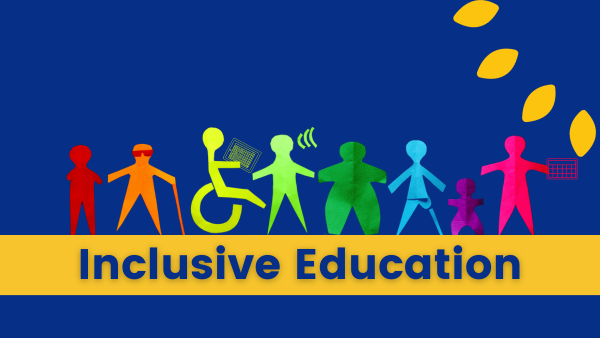AAC users3 April 2024

Building an inclusive learning environment is a commitment to recognising and addressing the diverse needs of every child. It also means creating an environment where all children feel welcome, valued and that they belong, without having to ask!
Being intentional in the set up of your learning environment will drive successful outcomes in engagement and positive behaviour. Children who experience an inclusive learning environment develop not only academically, but also socially and emotionally.
Just as inclusive architecture focuses on creating environments that are usable by all people – in education, resources and adjustments that may be a priority for some, can be used by all to enable opportunity.
When you minimise the barriers to learning and create an inclusive environment, ALL students are set up for success. This approach is particularly important in the early childhood setting, when needs may not yet have been identified and children are at different stages of development, with varying abilities.
There’s another buzzword you may have heard in education – Universal Design for Learning (UDL).
UDL guides the creation of learning outcomes, resources and assessments that work for everyone. While some children will need more individualised adjustments and tools to participate in an environment, UDL closes the gap that needs to be filled by an individual.
For example, height adjustable desks in a classroom mean that a child who uses a wheelchair some or all of the time, can still sit at the same desks and in the same space as all of the other children. In addition, taller children and smaller children can also set the desk to the height that best suits them rather than needing a cushion or having to sit at a different desk. These children ‘just fit’ in their classroom and there is no requirement to apply for extra funding, have special meetings to organise an appropriate desk, nor to encounter challenges when the class moves to a different room where the ‘special desk’ is not available. There may also be some days where all children would benefit from alternating between standing and sitting.
Communication is no different. Though the majority of children in our childcare and school settings communicate with spoken words, many need or prefer other methods such as sign, symbols, typing, body language and more. Many children benefit from alternate methods some of the time, or to enhance their expression or understanding through visual channels.
Just as PowerPoint, photos, maps and pictures add visual meaning and interest to our conversations and learning, visual displays can do the same for our children by expanding on the spoken word. All children can benefit from the inclusion of symbolic communication displays to enhance understanding, idea generation and expressive communication. With varied methods of communication available, those who need or prefer to use them will ‘just fit’ into their learning environment too. The communication displays also have a beneficial impact on those who may not speak English as a first language, may be shy, or as yet have not been identified as someone who may benefit from a personalised communication system.
Remember that preferences are part of the equality equation and are an important component in creating your inclusive learning environment. Taking preferences into account is crucial because it acknowledges that children have different ways of processing information and engaging with their surroundings. And those preferences may change based on the activity or environment.
Considering preferences promotes a sense of autonomy and agency among children. When children have choices in how they learn and demonstrate their understanding, they are more likely to be actively engaged and invested in their learning process. It’s empowering to feel valued and supported when exploring your own unique interests and strengths!
As we aim to create an inclusive world that includes communication accessibility opportunities, we need to ensure that symbolic communication starts in the early years as a component of UDL (also referred to as Tier 1 support). We can not know which children may need or prefer to use symbols for communication later in life, nor those who benefit from the symbols to enhance their comprehension of speech. Rather than waiting to find out, let’s give opportunities early.
It’s better to be glad we did, than to regret we didn’t
Integrating symbolic communication into existing curricula can be done with a few simple adjustments. By incorporating visual aids alongside other forms of communication, all children will feel empowered to express themselves effectively. And as we mentioned earlier, embracing inclusive communication practices early, not only benefits people with specific needs, but fosters empathy and understanding among all children preparing them for a diverse and interconnected world.
At Two Way Street, we’ve started our quest to ensure that people see symbolic communication as ‘just part of it’ rather than it being different or special.
Our first Communication For All Pack is available now, for the Early Childhood setting. We’ve done all the work, so you can create a truly communication inclusive environment. The pack includes symbolic communication displays for common activities in kindy or childcare settings, along with posters that value, respect and represent symbolic communication, plus downloadable templates to help you implement inclusive communication practices.
Take a closer look at the Communication For All Pack – Early Childhood. And get in touch with the team at Two Way Street for more information.
